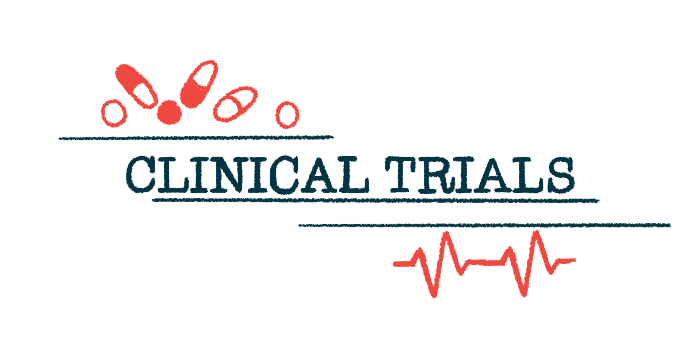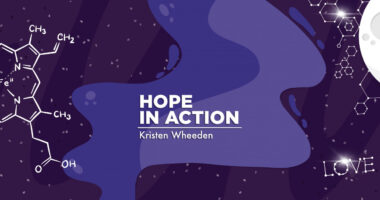Long-term Givlaari use lowers attack rates, hemin need for AHP patients
Three-year Phase 3 trial data finds sustained benefits with monthly treatment

Years of monthly treatment with Givlaari (givosiran) continued to be associated with sustained reductions in acute disease attacks and on-demand hemin use among people with active acute hepatic porphyria (AHP) in a Phase 3 clinical trial.
Final, three-year results from the ENVISION study (NCT03338816) and its open-label extension (OLE) also found the treatment led to sustained improvements in quality of life and had an acceptable safety profile.
These findings “confirm that long-term monthly dosing with [Givlaari] is well tolerated and provides sustained and continuous benefit to patients with AHP,” the scientists wrote.
The study, “Efficacy and safety of givosiran for acute hepatic porphyria: Final results of the randomized phase III ENVISION trial,” was published in the Journal of Hepatology.
Injectable porphyria treatment given to over 90 people with active disease
In AHP, genetic mutations disrupt the production of heme, a molecule needed for oxygen transport in the body. Consequently, intermediate molecules, particularly delta-aminolevulinic acid (ALA) and porphobilinogen (PBG), accumulate to toxic levels. This drives sudden and severe pain attacks as well as other long-term complications.
Givlaari, by Alnylam, is an approved injectable therapy for AHP. It works by reducing the production of the aminolevulinate synthase 1 (ALAS1) enzyme in the liver, which is overactive in this disease and causes ALA and PBG levels to rise. It does so by blocking the activity of the gene responsible for that enzyme’s production.
In the ENVISION trial, whose results supported Givlaari’s U.S. and European approvals, 94 people with active acute hepatic porphyria, ages 12 and older, were randomly assigned to subcutaneous (under-the-skin) injections of Givlaari (2.5 mg/kg) or a placebo once monthly for six months.
Almost all (89 people) had acute intermittent porphyria, the most common type of AHP.
Givlaari significantly reduced the rate of porphyria attacks by more than 70% compared with placebo, results showed. Treated patients also required significantly fewer days of hemin, an on-demand therapy given to control AHP attacks.
Moreover, treatment led to reductions in daily pain and in overall symptom burden (detailed in a 2022 published study) compared with a placebo, as well as gains in life quality.
After the main trial, 93 patients continued treatment in a 30-month OLE study. There all received Givlaari, initially at a 1.25 mg/kg or 2.5 mg/kg dose before moving to the higher dose.
Final, 3-year findings show median attack rates of fewer than 1 per year
Scientists now described full, 36-month (three year) findings spanning the ENVISION and OLE studies.
As observed in the main trial and interim analyses during the OLE, long-term treatment with Givlaari was associated with continued reductions in median annualized attack rates (AAR).
Particularly, patients randomized to Givlaari at the main trial’s start saw their annual attack rate drop from 1.0 in that study to 0.4 during its OLE. Among placebo patients who later moved to treatment, their median AAR fell from 10.7 in the main trial to 0.9 in the OLE.
The proportion of patients who were attack-free increased over the trial’s course. By its end at 36 months, 86% of those on continuous Givlaari treatment and 92% of those who crossed over to treatment were free of attacks for its final three months, months 33 to 36.
Annual attack rates at three years were lower than historic pretreatment rates for nearly all study participants on Givlaari. This drop was accompanied by fewer days of required on-demand hemin.
Gains in physical, mental quality of life reported by patients
The number of days of hemin treatment remained low over 36 months in those continuously using Givlaari, and decreased by 97% in those initially on placebo who switched to Givlaari.
Throughout the OLE, nearly half of patients in both groups (49%) did not require hemin to treat an attack. In its last three months (months 33 to 36), no days with hemin use were reported in 88% of those in the continuous treatment group and 90% of those starting on Givlaari in the OLE.
Patient-reported measures for the entire group indicated quality of life gains in both physical and mental function with long-term treatment. Lower ALA and PBG urinary levels were sustained for the study’s three years.
As in previous analyses, safety findings indicated that Givlaari was relatively well tolerated and safe. The most common side effects included injection-site reactions and nausea.
In what is the “largest interventional study in AHP to date,” monthly long-term treatment with Givlaari “leads to continuous and sustained reductions in annualized attack rate and use of hemin over time, as well as improved quality of life, with an acceptable safety profile,” the researchers concluded.
This study was supported by Alnylam Pharmaceuticals. Two of its 12 authors are company employees.







